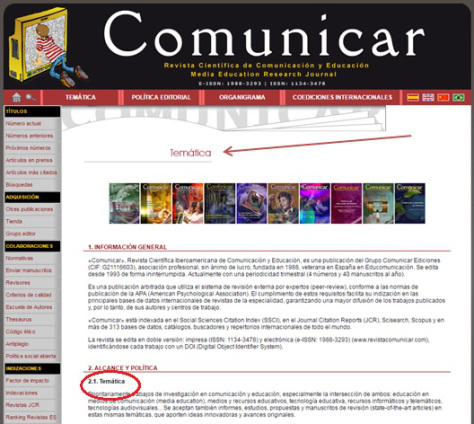Author: Amor Pérez-Rodríguez – Translation: Erika-Lucia Gonzalez-Carrion
Writing an article for publishing implies a certain ritual. The author should make a selection of all his or her research work and submit it to the structure of a scientific article. This first step involves an accurate synthesis, with a clear line in relation to what is wanted to be spread, and a format that will be conditioned by the journal to which the manuscript is intended to be sent.
 Many authors write their texts without having much knowledge of the structure and norms of scientific publications and this brings the consequent rejection of his or her contribution. It is very convenient the usual reading of scientific journals in the field of study in which the research is being developed. In this way, references and patterns of the writing and the dynamic of the scientific publication are gotten.
Many authors write their texts without having much knowledge of the structure and norms of scientific publications and this brings the consequent rejection of his or her contribution. It is very convenient the usual reading of scientific journals in the field of study in which the research is being developed. In this way, references and patterns of the writing and the dynamic of the scientific publication are gotten.
For this reason, the second moment in this process is selecting the journal in which it is aimed to publish. The selection should be done depending on several parameters. The main will be the thematic – range, focus, aims and scope-. Any magazine of a scientific level says in its regulations for authors what is the topic or topics of the articles that are diffused on it. In this way, it can be checked if the work comes in the framework of approaches and themes that would be publishable. Sending a text whose thematic is not of the interest of the magazine is a cause of common rejection. One of the main errors of the authors is not paying attention to this aspect, something, for other part, very negative as denotes lack of knowledge regards the magazine or, what is more worrying, difficulty in the determination of the object of the own work.
 Depending on the subject of the research, the interest of the researcher by the publication of the work, the validity or importance of it, a manuscript can be susceptible of acceptance in several headers. The author or authors must select properly in which of them it is clearer the tune with his or her approach and adjust it to its normative. Another frequent error of the authors is to send the article prepared for a specific magazine, after one rejection, to another without adapting it to the characteristics of this. It is recommended to have a list of possible magazines in which to publish, depending on range, focus, aims and scope. Some magazines show links to friends magazines or the ranking in which there are journals classified in the same field, that can orient the sending after a not acceptance.
Depending on the subject of the research, the interest of the researcher by the publication of the work, the validity or importance of it, a manuscript can be susceptible of acceptance in several headers. The author or authors must select properly in which of them it is clearer the tune with his or her approach and adjust it to its normative. Another frequent error of the authors is to send the article prepared for a specific magazine, after one rejection, to another without adapting it to the characteristics of this. It is recommended to have a list of possible magazines in which to publish, depending on range, focus, aims and scope. Some magazines show links to friends magazines or the ranking in which there are journals classified in the same field, that can orient the sending after a not acceptance.
The theme of each journal is shown generically in its presentation or in the beginning section.

It can also be seen in a specific part, as Thematic, Approach, Aims and Scope, in which is pointed the subtopics or more specific lines, next to the formats of text that are admitted (reports, studies, proposals, manuscripts of review…
Another way of specifying the theme more precisely is the call or proposal for a monograph. Usually the monographic explain very specifically the content on which the number of the publication will be about. Thus, it is subdivided into several lines or approaches in the field of the subject. For example, in the call to the number 52 of “Comunicar” about «The Social brain and connective intelligence.» « Communication and decision-making processes», proposals of research in the frame of the applications of the neuroscience to the Social Sciences are suggested (Economy, Psychology, Education, Politics, Laws…). It makes emphasis in the application of research works in communication and education, especially the intersection of both, and specific lines are opened as:
- The channels of access to the information and knowledge
- The formats derived in education and training
- The process of creation of public opinion
- The configuration of behaviors in the in the current society
- The change of perceptions and the evolution of attitudes and customs
- The decision- making of shopping
- The mass media and vote decisions
- The ways of entertainment, leisure in the hyper connected society
- Uses and effects of the Technologies of Information and Communication in the decision- making process
- Social networks and the opinion configuration processes
New strategies and trends in the field of the Neurocommunication and Neuromarketing, Neuropolitics and new strategies of communication in the electoral field
